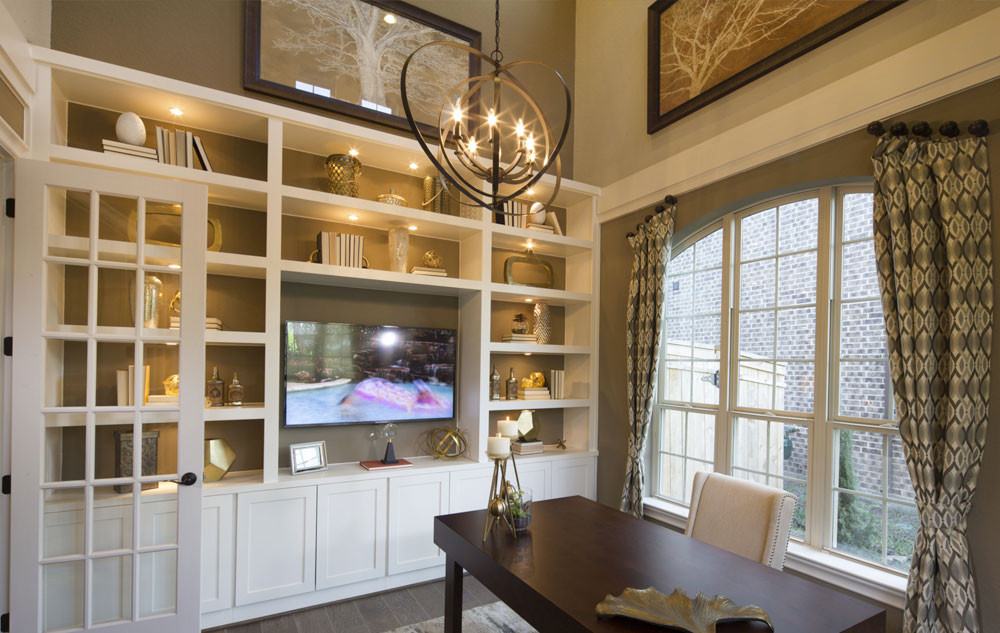Oh, my aching head! If you've recently started working at home, some of the things you take for granted in your workplace may be issues at home. At work, it was easy to call maintenance or put in a request for service if you needed new batteries or a fresh light bulb. At home, guess what? You are the maintenance person.
Working at home is new to a lot of us! As we posted in an earlier blog, proper lighting is key to setting up a productive workspace. Visual discomfort tops the list of pain-causing, work-at-home woes. Let's talk about glare, which is probably the most common cause of daily headaches and blurred vision.

Equinox Collection | Image: Toll Brothers
What exactly is glare?
There are two types of glare: discomfort glare and disability glare. Discomfort glare happens when light is too direct or reflects too strongly off a surface, creating a bright, dazzling light. Direct light from overhead fixtures or sun streaming in from a window bounces off your desk or computer screen and into your eyes, causing the pupil to constrict, allowing less light in. As the day progresses, your eyes are continually adapting to changing light levels, and that's what causes those killer headaches and eye fatigue.
Disability glare reduces how well we can see. Disability glare can be caused by eye conditions, like cataracts, and can occur with conventional light sources and levels of light. Disability glare reduces contrast, making it difficult to see details or distinguish objects. This type of light sensitivity usually requires medical treatment, but there are also ways that lighting can be adjusted to alleviate discomfort from glare.